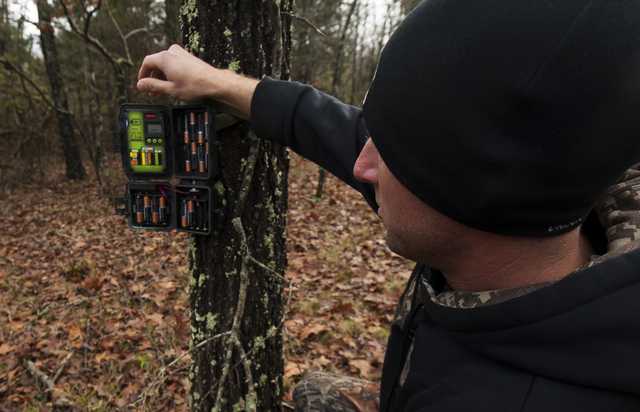For seasoned hunting or security enthusiasts, using a trail camera is not difficult. If you’re experienced, you could do with a little brushing, wouldn’t you? For new users, however, it’s a whole new world. The majority of people experience hurdles of using a trail camera right from the purchase. Many people fail to know how to choose a trail camera- check that out from our guide! Today, I’ll teach you on how to use a trail camera. Read on!

1. Read the user’s guide
One of the greatest mistakes that camera users make is failing to read the manufacturer’s manual guide. When such people get problems using the instrument, they don’t know what to do because they didn’t follow instructions. Ensure you apply the guidelines in the user manual.
2. Use the strap to hung on a wall or tree
Is your trail camera for hunting, security or fun? The purpose will let you know how to hang it. Hunting cameras need to be attached to a tree, and the rest could work on walls. Use the strap to lock it on the surface. The camouflaged feature discourages theft.
3. Record videos and take images
The trail camera is not a weapon or capture tool. It neither shoots the target nor screams upon sensing one. The camera only records videos of the target or take its images. Once you find the photos, you can act depending on the opportunity or threat.
Trail cameras for hunting capture the images of the game. This gives you a clue about how and when to hunt. The security cameras help you observe culprits and help in arrest.
4. Utilize day or night functionalities
The trail camera has day and night sensing functionalities. These are necessary for locating dangers or potential hunts during the night. The sensor does not have bright lights that could scare the target. The infrared LEDs help the camera to observe the surrounding. Some advanced models of trail cameras have a range of more than 45 feet (13.7 meters).
5. Choose a clever place to place the camera
Of course, you do not want the target to notice that you are recording them. Place-hunting cameras in a tight place such as a thicket. Ensure that no one else (the animals) can access or destroy the device. Use cameras that camouflage with the walls in case they are for security and domestic purposes.
6. Use multiple cameras
Do not rely on one camera. If you want to get the best shots, then you will have to consider taking them from different angles. Mount cameras on separate walls or trees to take pictures simultaneously. This will get you different angles of the target.
7. Decide whether to use film or digital trail cameras
Digital cameras are plenty on the market already. But you can still use the 35mm film models. The latter will store pictures on films instead of on the SD card. I’d suggest you have both types if at all you give a heck about mitigation.
8. Set the camera for infrared (IR) functions
If you want to get night-view images, then you should engage the infrared feature. Most cameras have it as the lone feature while others have the strobe flash, too. Some models have game calls and attractant sounds. These elements could be necessary for hunting purposes. The sound intervals are adjustable.
9. Set trail cameras
Strapping the camera on a tree or wall is not enough. You need to set it to take quality shots, too. Some models allow you set the intervals at which the images and videos can be taken. The LED (infrared) flash functionality lets you take pictures at night without any flash.
Thank you for reading our article and if you have any doubts/queries/suggestions, please feel free to comment below. If you find this article useful and knowledgeable, please share it with your circle. You can even contact us privately through the contact form or through social networking sites like Facebook, Twitter, Google+ etc.




